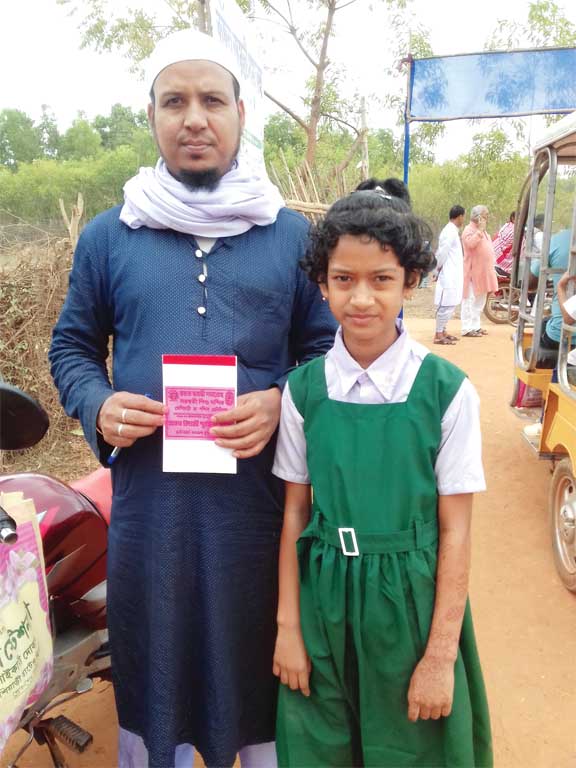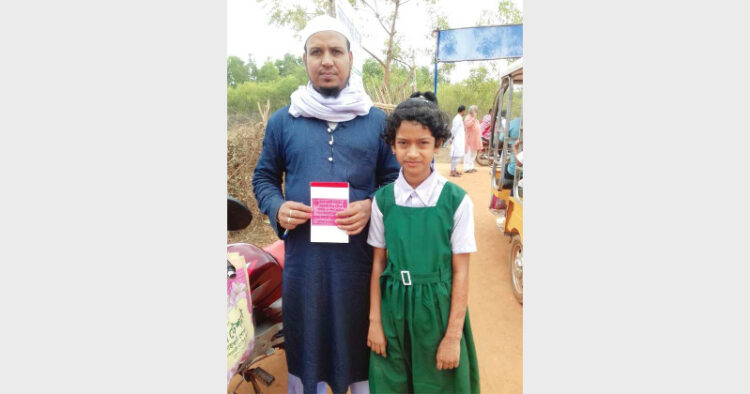 After sanctioning over 10,000 unauthorised Madrasas in the state, the ruling TMC concurs with the CPI(M) about closure of Vidya Bharati schools
After sanctioning over 10,000 unauthorised Madrasas in the state, the ruling TMC concurs with the CPI(M) about closure of Vidya Bharati schools
Jisnu Basu
In the ongoing session of West Bengal Legislative Assembly, Manas Mukherjee, a CPI(M) MLA raised a peculiar question. He reported that about 350 schools in the state are run by RSS affiliated organisations like Vivekananda Vidyavikash Parishad. He misinformed these schools are spreading communal intolerance in the society. He enquired about the action taken by the state
government against the schools. However, Comrade Mukherjee didn’t care to mention the source of his
information or exact nature of intolerance being taught in such schools.
In response, the State’s Education Minister, Partha Chatterjee, agreed with his CPI(M) colleague and opined: “We will not tolerate spreading of religious intolerance in the name of teaching
students and running schools.” In a press statement, issued on March 10, he also informed that the department has sent notice to 125 such schools. However, no such notice has yet been received by any Shishu Mandir or Vidya Mandir. District Inspectors of schools are also surprised with the statement of the Minister, as these primary and secondary schools are most disciplined and exactly follow the Board syllabus.
The TMC always differs with CPI(M). Even at the time of demonetisation, the saddest moment of becoming ‘Have not’, they couldn’t associate with CPI(M). TMC refused to support Bharat Bandh called by the Left on November 28 last year on this issue. Nevertheless, this time TMC agreed with CPI(M) and assured to take action against the schools. ‘Fools never differ’- if this old proverb appeals to your mind, you are mistaken. There is a common guilty feeling of the political parties about Primary and Secondary education in the state.
Actual condition of Primary education in the state is pathetic. Number of
students in an average Government Primary school in rural West Bengal is about 300. In urban areas the number is much less. Average number of teachers in a school is four. Eventually, the number comes down to three in a regular school day, as someone may be on leave for
personal or medical reasons. Total five classes, from “Pre-primary’ to IV, are managed by three assistant teachers. In many schools, full attendance is observed only in the days when mid-day meal is served. For other days, teachers and students generally don’t bother about it. The condition of toilets is miserable, which is absolutely unhygienic for a girl child. A large number of Primary Schools don’t have any source of drinking water. Local TMC hooligans are involved in every stage of fund flow to the schools, from mid-day meal to construction work under centrally-sponsored scheme of District Primary Education Programme (DPEP).
A recent report shows that the
percentage of school dropouts is really shocking in most of the districts. More than ninety percent of students presently studying in government-aided Primary Schools are from Dalit community. Ironically, West Bengal is among the few states that literally failed to utilise Special Central Assistance (SCA) fund for
development of SC/ST communities. The business of Primary Education has totally been captured by actual businessmen in Kolkata and suburbans. The model has also been caricatured in rural areas. On an average, monthly tuition fee for a 3rd Standard student of an English medium school in and around Kolkata is Rs 4000 . The amount would be around Rs 1,500 per month in rural areas, which is far beyond the reach of an average family.
Obviously, CPI (M) should
particularly be credited for this condition of Primary Education in the state. Lefts used Primary Teachers merely to gear up the party machinery during last two decades of their regime. Often 4/5
members of one single family had been engaged as primary teachers on the basis of their political identity. The quality of education, dedication of the teachers and infrastructural development had never been their concern, teachers were judged by their loyalty to the party. On May 23, 2003, ‘The Statesman’ reported, “The constitutional declaration of compulsory education up to class VIII is an illusion in West Bengal”. At that time 3 out of 4
students admitted in pre-primary (infant) didn”t continue study up to class IV. The percentage of students who continued to secondary level was less than 10.
West Bengal was the first state to
constitute a formal Madrasah Board. Madrasah Education Act. 1994 (West Bengal Act. XXXIX of 1994) was passed in WB Legislative Assembly. The Act allowed the Board to function with the same academic, administrative and financial powers, facilities, status and
privileges as enjoyed by West Bengal Secondary Board of Education or West Bengal Council of Higher Secondary Education. The architects of Indian Constitution probably didn”t dream of the present syllabus of High Madrash in West Bengal. Article 30 of the Constitution tells about the financial liberty of
minority institutions but doesn’t advise to teach different History to a portion of future citizens of the country.
CPI(M) ruled West Bengal took the
leading role in this
direction. High Madrasah Examination is considered to be equivalent to Madhymik (School final) examination in WB. The History syllabus of High Madrasah Examination is very interesting, 36 marks of the paper is allotted for History of Islam, Indian History carriies only 64 marks. Generally, no question is set on any historical event prior to Islamic
invasion in India. As a matter of fact High Madrasah students would not learn about Ashoka, Samudra Gupta or Nalanda University in their history course. There is only one test book published by the Board on History of Islam, which has been recommended for all the students from class 6th to 10th level. The total process was developed during CPIM period. This is actual contribution of the purest secular party of the country.
During the period, a group of dedicated selfless social workers established a good number of Saraswati Sishu Mandirs throughout the State under the umbrella of Vivekanada Vidyavikash Parishad, WB chapter of the Vidya Bharati. Young boys and girls contributed their priceless time to develop the quality of education in Saraswati Sishu Mandirs. Due to the sacrifice and dedication of the teachers, the schools became very
popular in almost all the districts. In some cities these schools are considered as the best ones. Depending upon the
demography of the districts, large number of Muslim parents also send their kids to Vidya Bharati schools for better
education. In some schools total number of Muslim students is more than 40 per cent. Muslims do not have any kind of problem with Saraswati Shisu Mandir activities, parents are only bothered about the quality of education. The problem is felt only by the caste Hindu leaders of CPI(M) party because of their untouchability about RSS connection!
In 1990s, the CPI-M used to torture the
members of the managing committees of Vidya Bharati schools. A large number of teachers had been physically harassed by the CPI-M goons in different districts. Before the enactment of Right to Education, no
permission or NOC was required to run a Primary School. To establish Secondary Schools permission was required. Despite having sufficient infrastructure and teaching strength no Vidya Mandir got the required permission in CPI-M regime. As a result, unlike Assam, Orissa and other eastern states, Vidya Bharati schools have failed to develop in West Bengal. In 2015, Sarfraz Hussain, a student of Sankardev Shishu Niketan, Betkuchi near Guwahati, secured 1st position in High School Leaving Certificate (HSLC) examination of Board of Secondary Education, Assam. Such level of excellence could not have been achieved had CPI(M) like forces been present in Assam.
The problem of the present
government is altogether different. Initially, they have issued the NOC for Secondary and Primary schools of Vidya Bharati. The sincerity, dedication and integrity of the Head Teachers and
organisers have been found to be
satisfactory to the personnel of DI offices. TMC is now projecting itself as
anti-Hindu and pro-Muslim. They expect to get more and more payoff from
pretending to be extremely anti-Hindu.
The announcement of sanctioning more than 10,000 unauthorised (Khariji) Madrasahs was the refection of their mindset. In these circumstances, TMC Education Minister cann’t afford to be less proactive than CPI-M to guillotine RSS and its like-minded organisations. This is the root cause of the reaction of the Minister. Probably, bureaucrats expressed their reservation about
arbitrarily chopping off such good
educational institutes and the department didn’t issue the notice.














Comments